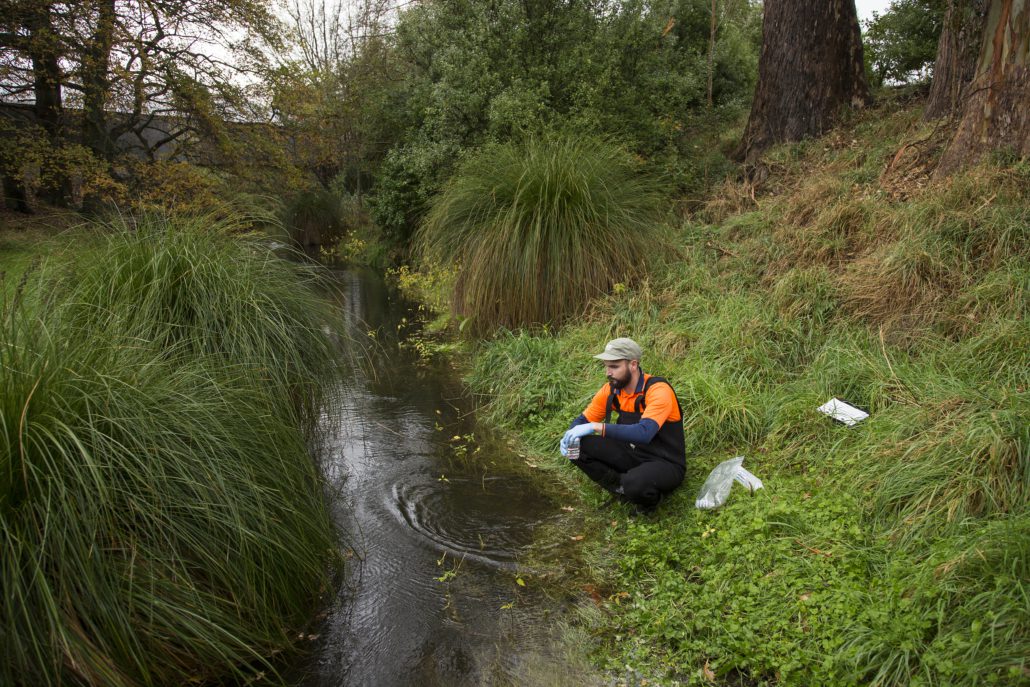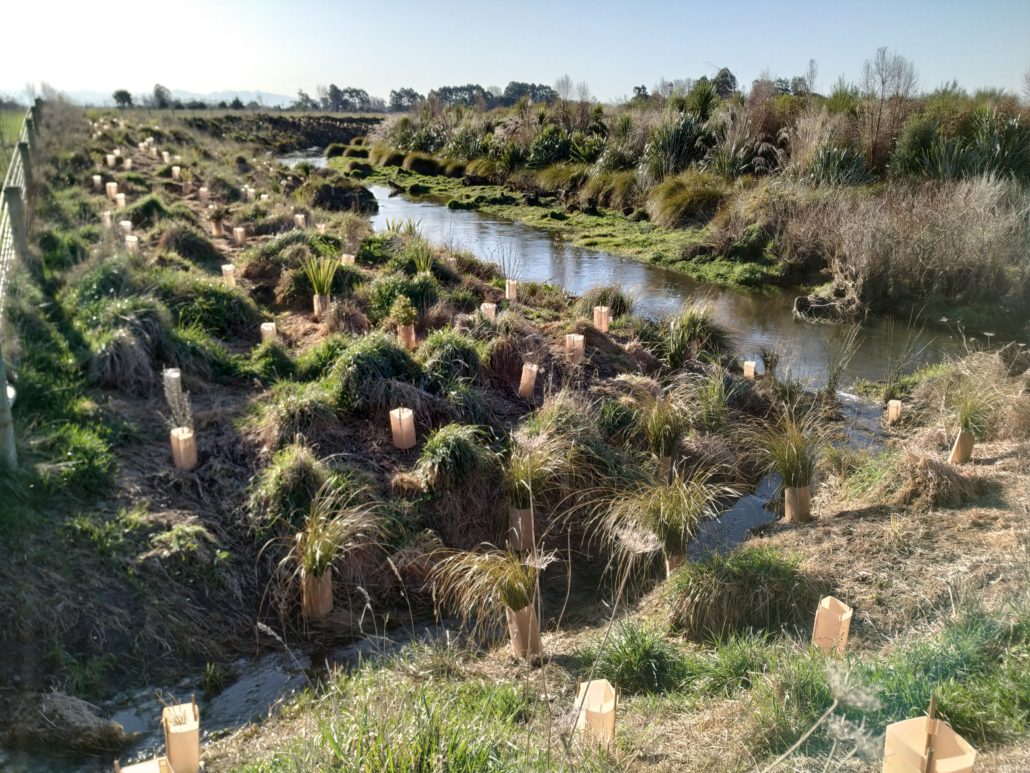Consultants Deliver Water Quality Report
Pattle Delamore Partners recently completed 2 years of baseline water quality monitoring at 10 sites along 4 lowland streams within the ESAI area. The sites were along Boggy Creek, Birdlings Brook / Harts Creek and Jollies Brook.
Samples were collected and observations made at each site monthly and an annual ecological survey undertaken.
The objectives of the monitoring were to provide a robust baseline of water quality for the target streams to facilitate comparison and tracking of changes over time. 
Ecological surveys were conducted to assess the biological health of waterways and provide a comprehensive list of freshwater fish, macroinvertebrates and plant species residing in each watercourse.
The overall results from the 2 years of water quality data aligns with many other lowland streams in the Canterbury region. Typically, data showed elevated nitrate levels meaning our streams continue to be at levels above the National Policy Statement for Freshwater ‘bottom line’ values. A couple of the streams also showed variable levels of Faecal microbes (E-Coli) with some above recommended levels at certain times of year.
Sediment deposition is also an ongoing issue causing a loss of habitat for aquatic fauna within the streams and the elevated nutrient concentrations is likely leading to excessive weed / aquatic plant growth within the water courses.
But it wasn’t all bad news; in general, phosphorous levels were relatively low apart from spikes during high rainfall events. Much improvement has been made to reducing phosphorous levels entering waterways since the implementation of fencing, creating buffers and planting along waterways.

Whilst fish & macroinvertebrate diversity survey results were generally quite poor with only a handful of common species found in each stream, eDNA sampling found evidence of a much wider range of species including Kōurā, Inanga and encouragingly Lamprey which are classified as threatened-nationally vulnerable.
The diversity of species was noticeably improved along sections of the streams that were closer to the lake and had well established native plantings along them.
Along with all the data, PDP have given their recommendations on areas to focus on with riparian planting to hopefully mitigate some of the contamination problems.
Riparian planting and fixing critical source areas along waterways has a range of benefits including:
• Creating a filter for run off – plants trap sediment and debris before it enters the waterway.
• Uptake of nutrients – as they grow, plants absorb nutrients preventing them from contaminating water.
• Preventing erosion – plant roots help to hold stream banks reducing the amount of soil that washes into rivers.
• Creating shade – this reduces weed growth in the water and regulates water temperature for fish.
• Leaf litter and woody debris that fall into the water from plants provide food and habitat for native fish and insects.
• Planting along waterways creates habitat for native birds which then disperse native plant seeds to other locations – spreading native vegetation naturally.
• Increase in biodiversity and mahinga kai values.
Riparian planting is hugely beneficial for our waterways but more will be needed and it will take time for plantings to make a difference. The restorative plantings that have taken place on ESAI member’s farms through the Tinaku project and also on other farms within the region will take time to mature and provide the best results.
To confirm the positive outcomes from Tinaku restoration projects along these streams, PDP recommends follow up water quality monitoring and ecological surveys in 5 and 10 years time – after additional riparian planting is completed and existing ESAI projects have matured.




